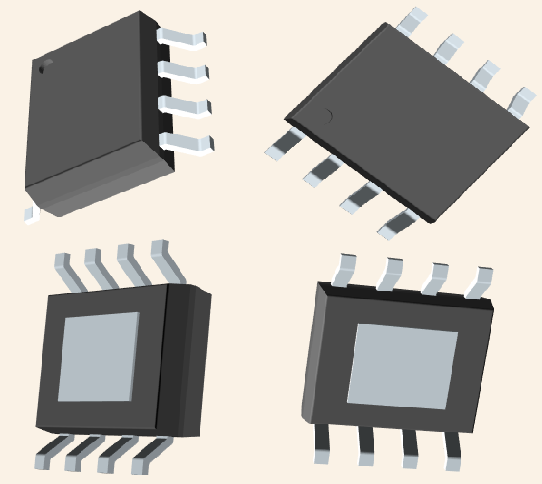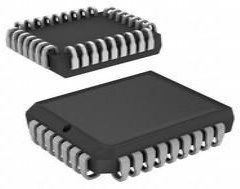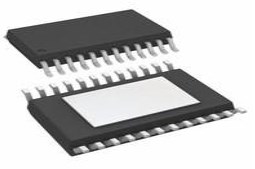TPS5430 Step-Down Converter: Pinout, Equivalent and Datasheet
8 Terminals 5.5V 8-Pin TPS5430 DC DC Voltage Regulator SWITCHING REGULATOR 1 Outputs Tube 8-PowerSOIC (0.154, 3.90mm Width)









8 Terminals 5.5V 8-Pin TPS5430 DC DC Voltage Regulator SWITCHING REGULATOR 1 Outputs Tube 8-PowerSOIC (0.154, 3.90mm Width)
The TPS5430 is a 3-A, step down regulator with an integrated high side MOSFET. This device is typically used to convert a higher DC voltage to a lower DC voltage with a maximum available output current of 3A. The TPS5430 is designed to operate from an input voltage supply range between 5.5 V and 36 V. Furthermore, Huge range of Semiconductors, Capacitors, Resistors and IcS in stock. Welcome RFQ.
TPS5430 Pinout

Pinout
TPS5430 CAD Model

Symbol

Footprint

3D Model
TPS5430 Overview
The TPS5430 is a 3-A, step-down (buck) regulator with an integrated high-side n-channel MOSFET. The TPS5430 is a high-output-current PWM converter that integrates a low-resistance, high-side N-channel MOSFET. The TPS5430 device is available in a thermally enhanced, easy to use 8-pin SOIC PowerPAD™ package. TI provides evaluation modules and the Designer software tool to aid in quickly achieving high-performance power supply designs to meet aggressive equipment development cycles. The TPS5430 includes an internal slow-start circuit that slows the output rise time during start up to reduce in rush current and output voltage overshoot. This article provides you with a basic overview of the TPS5430, including its pin descriptions, features and specifications, etc., to help you quickly understand what TPS5430 is.
TPS5430 Features
• Wide Input Voltage Range:
– TPS5430: 5.5 V to 36 V
– TPS5431: 5.5 V to 23 V
• Up to 3-A Continuous (4-A Peak) Output Current
• High Efficiency up to 95% Enabled by 110-mΩ Integrated MOSFET Switch
• Wide Output Voltage Range: Adjustable Down to 1.22 V with 1.5% Initial Accuracy
• Internal Compensation Minimizes External Parts Count
• Fixed 500 kHz Switching Frequency for Small Filter Size
• Improved Line Regulation and Transient
Response by Input Voltage Feed Forward
• System Protected by Overcurrent Limiting,
Overvoltage Protection and Thermal Shutdown
• –40°C to 125°C Operating Junction Temperature Range
• Available in Small Thermally Enhanced 8-Pin SO PowerPAD™ Package
TPS5430 Advantage
The TPS5430 regulates a wide variety of power sources including 24 V bus. The TPS5431 is intended to operate from power rails up to 23 V and the TPS5430 up to 36 V. These devices implement constant-frequency voltage-mode control with voltage feed forward for improved line regulation and line transient response. Internal compensation reduces design complexity and external component count. The integrated 110-mΩ high-side MOSFET supports high-efficiency power-supply designs capable of delivering 3-A of continuous current to a load. The gate-drive bias voltage for the integrated high-side MOSFET is supplied by a bootstrap capacitor connected from the BOOT to PH pins. The TPS5430 reduces the external component count by integrating the bootstrap recharge diode.
The TPS5430 has a default input start-up voltage of 5.3 V typical. The ENA pin can be used to disable the TPS5430 reducing the supply current to 18 µA. An internal pullup current source enables operation when the ENA pin is floating. The TPS5430 includes an internal slow-start circuit that slows the output rise time during start up to reduce in rush current and output voltage overshoot. The minimum output voltage is the internal 1.221-V feedback reference. Output overvoltage transients are minimized by an Overvoltage Protection (OVP) comparator. When the OVP comparator is activated, the high-side MOSFET is turned off and remains off until the output voltage is less than 112.5% of the desired output voltage. Internal cycle-by-cycle overcurrent protection limits the peak current in the integrated high-side MOSFET. For continuous overcurrent fault conditions the TPS5430 will enter hiccup mode overcurrent limiting. Thermal protection protects the device from overheating.
Specifications
- TypeParameter
- Lifecycle Status
Lifecycle Status refers to the current stage of an electronic component in its product life cycle, indicating whether it is active, obsolete, or transitioning between these states. An active status means the component is in production and available for purchase. An obsolete status indicates that the component is no longer being manufactured or supported, and manufacturers typically provide a limited time frame for support. Understanding the lifecycle status is crucial for design engineers to ensure continuity and reliability in their projects.
ACTIVE (Last Updated: 6 days ago) - Factory Lead Time6 Weeks
- Mount
In electronic components, the term "Mount" typically refers to the method or process of physically attaching or fixing a component onto a circuit board or other electronic device. This can involve soldering, adhesive bonding, or other techniques to secure the component in place. The mounting process is crucial for ensuring proper electrical connections and mechanical stability within the electronic system. Different components may have specific mounting requirements based on their size, shape, and function, and manufacturers provide guidelines for proper mounting procedures to ensure optimal performance and reliability of the electronic device.
Surface Mount - Mounting Type
The "Mounting Type" in electronic components refers to the method used to attach or connect a component to a circuit board or other substrate, such as through-hole, surface-mount, or panel mount.
Surface Mount - Package / Case
refers to the protective housing that encases an electronic component, providing mechanical support, electrical connections, and thermal management.
8-PowerSOIC (0.154, 3.90mm Width) - Number of Pins8
- Weight70.590313mg
- Operating Temperature
The operating temperature is the range of ambient temperature within which a power supply, or any other electrical equipment, operate in. This ranges from a minimum operating temperature, to a peak or maximum operating temperature, outside which, the power supply may fail.
-40°C~125°C TJ - Packaging
Semiconductor package is a carrier / shell used to contain and cover one or more semiconductor components or integrated circuits. The material of the shell can be metal, plastic, glass or ceramic.
Tube - JESD-609 Code
The "JESD-609 Code" in electronic components refers to a standardized marking code that indicates the lead-free solder composition and finish of electronic components for compliance with environmental regulations.
e4 - Pbfree Code
The "Pbfree Code" parameter in electronic components refers to the code or marking used to indicate that the component is lead-free. Lead (Pb) is a toxic substance that has been widely used in electronic components for many years, but due to environmental concerns, there has been a shift towards lead-free alternatives. The Pbfree Code helps manufacturers and users easily identify components that do not contain lead, ensuring compliance with regulations and promoting environmentally friendly practices. It is important to pay attention to the Pbfree Code when selecting electronic components to ensure they meet the necessary requirements for lead-free applications.
yes - Part Status
Parts can have many statuses as they progress through the configuration, analysis, review, and approval stages.
Active - Moisture Sensitivity Level (MSL)
Moisture Sensitivity Level (MSL) is a standardized rating that indicates the susceptibility of electronic components, particularly semiconductors, to moisture-induced damage during storage and the soldering process, defining the allowable exposure time to ambient conditions before they require special handling or baking to prevent failures
1 (Unlimited) - Number of Terminations8
- ECCN Code
An ECCN (Export Control Classification Number) is an alphanumeric code used by the U.S. Bureau of Industry and Security to identify and categorize electronic components and other dual-use items that may require an export license based on their technical characteristics and potential for military use.
EAR99 - Terminal Finish
Terminal Finish refers to the surface treatment applied to the terminals or leads of electronic components to enhance their performance and longevity. It can improve solderability, corrosion resistance, and overall reliability of the connection in electronic assemblies. Common finishes include nickel, gold, and tin, each possessing distinct properties suitable for various applications. The choice of terminal finish can significantly impact the durability and effectiveness of electronic devices.
Nickel/Palladium/Gold (Ni/Pd/Au) - Terminal Position
In electronic components, the term "Terminal Position" refers to the physical location of the connection points on the component where external electrical connections can be made. These connection points, known as terminals, are typically used to attach wires, leads, or other components to the main body of the electronic component. The terminal position is important for ensuring proper connectivity and functionality of the component within a circuit. It is often specified in technical datasheets or component specifications to help designers and engineers understand how to properly integrate the component into their circuit designs.
DUAL - Terminal Form
Occurring at or forming the end of a series, succession, or the like; closing; concluding.
GULL WING - Peak Reflow Temperature (Cel)
Peak Reflow Temperature (Cel) is a parameter that specifies the maximum temperature at which an electronic component can be exposed during the reflow soldering process. Reflow soldering is a common method used to attach electronic components to a circuit board. The Peak Reflow Temperature is crucial because it ensures that the component is not damaged or degraded during the soldering process. Exceeding the specified Peak Reflow Temperature can lead to issues such as component failure, reduced performance, or even permanent damage to the component. It is important for manufacturers and assemblers to adhere to the recommended Peak Reflow Temperature to ensure the reliability and functionality of the electronic components.
260 - Frequency
In electronic components, the parameter "Frequency" refers to the rate at which a signal oscillates or cycles within a given period of time. It is typically measured in Hertz (Hz) and represents how many times a signal completes a full cycle in one second. Frequency is a crucial aspect in electronic components as it determines the behavior and performance of various devices such as oscillators, filters, and communication systems. Understanding the frequency characteristics of components is essential for designing and analyzing electronic circuits to ensure proper functionality and compatibility with other components in a system.
500kHz - Base Part Number
The "Base Part Number" (BPN) in electronic components serves a similar purpose to the "Base Product Number." It refers to the primary identifier for a component that captures the essential characteristics shared by a group of similar components. The BPN provides a fundamental way to reference a family or series of components without specifying all the variations and specific details.
TPS5430 - Function
The parameter "Function" in electronic components refers to the specific role or purpose that the component serves within an electronic circuit. It defines how the component interacts with other elements, influences the flow of electrical signals, and contributes to the overall behavior of the system. Functions can include amplification, signal processing, switching, filtering, and energy storage, among others. Understanding the function of each component is essential for designing effective and efficient electronic systems.
Step-Down - Number of Outputs1
- Efficiency
Efficiency in electronic components refers to the ratio of useful output energy or power to the input energy or power. It is a measure of how effectively a component converts input energy into output energy without wasting any energy in the process. Higher efficiency indicates that the component is more effective in performing its intended function while minimizing energy losses. Efficiency is an important parameter in electronic components such as power supplies, amplifiers, and motors, as it directly impacts the overall performance and energy consumption of the system. Manufacturers often specify the efficiency rating of their components to help users understand how efficiently the component operates under different conditions.
95 % - Output Voltage
Output voltage is a crucial parameter in electronic components that refers to the voltage level produced by the component as a result of its operation. It represents the electrical potential difference between the output terminal of the component and a reference point, typically ground. The output voltage is a key factor in determining the performance and functionality of the component, as it dictates the level of voltage that will be delivered to the connected circuit or load. It is often specified in datasheets and technical specifications to ensure compatibility and proper functioning within a given system.
5V - Output Type
The "Output Type" parameter in electronic components refers to the type of signal or data that is produced by the component as an output. This parameter specifies the nature of the output signal, such as analog or digital, and can also include details about the voltage levels, current levels, frequency, and other characteristics of the output signal. Understanding the output type of a component is crucial for ensuring compatibility with other components in a circuit or system, as well as for determining how the output signal can be utilized or processed further. In summary, the output type parameter provides essential information about the nature of the signal that is generated by the electronic component as its output.
Adjustable - Max Output Current
The maximum current that can be supplied to the load.
3A - Operating Supply Voltage
The voltage level by which an electrical system is designated and to which certain operating characteristics of the system are related.
36V - Voltage - Input (Min)
Voltage - Input (Min) refers to the minimum voltage level that an electronic component requires to operate correctly. It indicates the lowest voltage that can be applied to the component while still allowing it to function as intended. If the input voltage falls below this specified minimum, the component may not perform properly or may fail to operate altogether. This parameter is critical for ensuring reliable operation and longevity of the device in electronic circuits.
5.5V - Input Voltage-Nom
Input Voltage-Nom refers to the nominal or rated input voltage that an electronic component or device is designed to operate within. This parameter specifies the voltage level at which the component is expected to function optimally and safely. It is important to ensure that the actual input voltage supplied to the component does not exceed this nominal value to prevent damage or malfunction. Manufacturers provide this specification to guide users in selecting the appropriate power supply or input voltage source for the component. It is a critical parameter to consider when designing or using electronic circuits to ensure reliable performance and longevity of the component.
12V - Analog IC - Other Type
Analog IC - Other Type is a parameter used to categorize electronic components that are integrated circuits (ICs) designed for analog signal processing but do not fall into more specific subcategories such as amplifiers, comparators, or voltage regulators. These ICs may include specialized analog functions such as analog-to-digital converters (ADCs), digital-to-analog converters (DACs), voltage references, or signal conditioning circuits. They are typically used in various applications where precise analog signal processing is required, such as in audio equipment, instrumentation, communication systems, and industrial control systems. Manufacturers provide detailed specifications for these components to help engineers select the most suitable IC for their specific design requirements.
SWITCHING REGULATOR - Output Configuration
Output Configuration in electronic components refers to the arrangement or setup of the output pins or terminals of a device. It defines how the output signals are structured and how they interact with external circuits or devices. The output configuration can determine the functionality and compatibility of the component in a circuit design. Common types of output configurations include single-ended, differential, open-drain, and push-pull configurations, each serving different purposes and applications in electronic systems. Understanding the output configuration of a component is crucial for proper integration and operation within a circuit.
Positive - Quiescent Current
The quiescent current is defined as the current level in the amplifier when it is producing an output of zero.
3mA - Max Output Voltage
The maximum output voltage refers to the dynamic area beyond which the output is saturated in the positive or negative direction, and is limited according to the load resistance value.
31V - Voltage - Output (Min/Fixed)
Voltage - Output (Min/Fixed) refers to the minimum fixed output voltage level that an electronic component, such as a voltage regulator or power supply, is designed to provide under specified load conditions. This parameter ensures that the device consistently delivers a reliable voltage that meets the requirements of the connected circuits or components. It is critical for applications where stable and predictable voltage is necessary for proper operation.
1.221V - Topology
In the context of electronic components, "topology" refers to the arrangement or configuration of the components within a circuit or system. It defines how the components are connected to each other and how signals flow between them. The choice of topology can significantly impact the performance, efficiency, and functionality of the electronic system. Common topologies include series, parallel, star, mesh, and hybrid configurations, each with its own advantages and limitations. Designers carefully select the appropriate topology based on the specific requirements of the circuit to achieve the desired performance and functionality.
Buck - Control Mode
In electronic components, "Control Mode" refers to the method or mode of operation used to regulate or control the behavior of the component. This parameter determines how the component responds to input signals or commands to achieve the desired output. The control mode can vary depending on the specific component and its intended function, such as voltage regulation, current limiting, or frequency modulation. Understanding the control mode of an electronic component is crucial for proper integration and operation within a circuit or system.
VOLTAGE-MODE - Control Technique
In electronic components, "Control Technique" refers to the method or approach used to regulate and manage the operation of the component. This parameter is crucial in determining how the component functions within a circuit or system. Different control techniques can include analog control, digital control, pulse-width modulation (PWM), and various feedback mechanisms. The choice of control technique can impact the performance, efficiency, and overall functionality of the electronic component. It is important to select the appropriate control technique based on the specific requirements and characteristics of the application in which the component will be used.
PULSE WIDTH MODULATION - Synchronous Rectifier
Synchronous rectification is a technique for improving the efficiency of rectification by replacing diodes with actively controlled switches, usually power MOSFETs or power bipolar junction transistors (BJT).
No - Min Output Voltage
Min Output Voltage refers to the lowest voltage level that an electronic component, such as a voltage regulator or power supply, can provide reliably under specified conditions. It indicates the minimum threshold required for proper operation of connected devices. Operating below this voltage may lead to device malfunction or failure to operate as intended.
1.22V - Height1.7mm
- Length4.89mm
- Width3.9mm
- Thickness
Thickness in electronic components refers to the measurement of how thick a particular material or layer is within the component structure. It can pertain to various aspects, such as the thickness of a substrate, a dielectric layer, or conductive traces. This parameter is crucial as it impacts the electrical, mechanical, and thermal properties of the component, influencing its performance and reliability in electronic circuits.
1.48mm - REACH SVHC
The parameter "REACH SVHC" in electronic components refers to the compliance with the Registration, Evaluation, Authorization, and Restriction of Chemicals (REACH) regulation regarding Substances of Very High Concern (SVHC). SVHCs are substances that may have serious effects on human health or the environment, and their use is regulated under REACH to ensure their safe handling and minimize their impact.Manufacturers of electronic components need to declare if their products contain any SVHCs above a certain threshold concentration and provide information on the safe use of these substances. This information allows customers to make informed decisions about the potential risks associated with using the components and take appropriate measures to mitigate any hazards.Ensuring compliance with REACH SVHC requirements is essential for electronics manufacturers to meet regulatory standards, protect human health and the environment, and maintain transparency in their supply chain. It also demonstrates a commitment to sustainability and responsible manufacturing practices in the electronics industry.
No SVHC - RoHS Status
RoHS means “Restriction of Certain Hazardous Substances” in the “Hazardous Substances Directive” in electrical and electronic equipment.
ROHS3 Compliant - Lead Free
Lead Free is a term used to describe electronic components that do not contain lead as part of their composition. Lead is a toxic material that can have harmful effects on human health and the environment, so the electronics industry has been moving towards lead-free components to reduce these risks. Lead-free components are typically made using alternative materials such as silver, copper, and tin. Manufacturers must comply with regulations such as the Restriction of Hazardous Substances (RoHS) directive to ensure that their products are lead-free and environmentally friendly.
Lead Free
TPS5430 Functional Block Diagram

Functional Block Diagram

Simplified Schematic

Pin Functions
TPS5430 Equivalent
| Model number | Manufacturer | Description |
| LMR33640ADDAR | Texas Instruments | SIMPLE SWITCHER® 3.8-V to 36-V, 4-A step-down converter in SOIC-8 package 8-SO PowerPAD -40 to 125 |
| APW7080KAI-TRL | American Power Devices Inc | Switching Regulator, Current-mode, 0.03A, 420kHz Switching Freq-Max, PDSO8, ROHS COMPLIANT, MS-012BA, SOP-8 |
| APW7080KAI-TRG | American Power Devices Inc | Switching Regulator, Current-mode, 4A, 420kHz Switching Freq-Max, PDSO8, GREEN, MS-012BA, SOP-8 |
| APW7070AKAI-TRL | American Power Devices Inc | Switching Regulator, Current-mode, 0.03A, 420kHz Switching Freq-Max, PDSO8, ROHS COMPLIANT, MS-012BA, SOP-8 |
| APW7085KI-TRL | American Power Devices Inc | Switching Regulator, Current-mode, 0.03A, 420kHz Switching Freq-Max, PDSO8, ROHS COMPLIANT, MS-012AA, SOP-8 |
| APW7070KAI-TRL | American Power Devices Inc | Switching Regulator, Current-mode, 0.03A, 420kHz Switching Freq-Max, PDSO8, ROHS COMPLIANT, MS-012BA, SOP-8 |
| APW7070AKAI-TRG | American Power Devices Inc | Switching Regulator, Current-mode, 3A, 420kHz Switching Freq-Max, PDSO8, GREEN, MS-012BA, SOP-8 |
| LMR33640ADDA | Texas Instruments | SIMPLE SWITCHER® 3.8-V to 36-V, 4-A step-down converter in SOIC-8 package 8-SO PowerPAD -40 to 125 |
| TPS54302DDCR | Texas Instruments | 4.5-V to 28-V Input, 3-A Output, EMI Friendly Synchronous Step-Down Converter 6-SOT-23-THIN -40 to 125 |
Parts with Similar Specs
- ImagePart NumberManufacturerPackage / CaseNumber of PinsNumber of OutputsMax Output CurrentInput Voltage-NomVoltage - Input (Min)Min Output VoltageOutput VoltageMax Output VoltageVoltage - Output (Max)EfficiencyView Compare
TPS5430DDAG4
8-PowerSOIC (0.154, 3.90mm Width)
8
1
3 A
12 V
5.5V
1.22 V
5 V
31 V
32.04V
95 %
8-PowerSOIC (0.154, 3.90mm Width)
8
1
3 A
12 V
-
1.285 V
1.285 V
37 V
37V
90 %
8-PowerSOIC (0.154, 3.90mm Width)
8
1
3 A
12 V
5.5V
1.22 V
20 V
20 V
20.47V
95 %
8-SOIC (0.154, 3.90mm Width)
8
1
3 A
-
4.5V
1.235 V
-
21.62 V
-
-
8-PowerSOIC (0.154, 3.90mm Width)
8
1
3 A
12 V
-
1.285 V
1.285 V
37 V
37V
90 %
TPS5430 Application
• Consumer: Set-top Box, DVD, LCD Displays
• Industrial and Car Audio Power Supplies
• Battery Chargers, High Power LED Supply
• 12-V/24-V Distributed Power Systems
TPS5430 Package

package outline
TPS5430 Manufacturer
Texas Instruments (TI) emerges as a globally recognized semiconductor manufacturer expanded into 35 countries. It has seen a rapid growth. In 1958, TIer firstly introduced the working integrated circuit. And today more than 30,000 TIers worldwide are committed to designing, manufacturing, and selling analog and embedded processing chips. They aspire to solve challenges as well as change the world through their technologies.
Texas Instruments (TI) is an American technology company that designs and manufactures semiconductors and various integrated circuits, which it sells to electronics designers and manufacturers globally. Its headquarters are in Dallas, Texas, United States. TI is one of the top ten semiconductor companies worldwide, based on sales volume.Texas Instruments's focus is on developing analog chips and embedded processors, which accounts for more than 80% of their revenue. TI also produces TI digital light processing (DLP) technology and education technology products including calculators, microcontrollers and multi-core processors. To date, TI has more than 43,000 patents worldwide.
Datasheet PDF
- Datasheets :
- PCN Design/Specification :
- PCN Assembly/Origin :
Trend Analysis
What is the operating voltage of TPS5431 and TPS5430?
The TPS5431 is intended to operate from power rails up to 23 V and the TPS5430 up to 36 V.
How does TPS5430 reduce the number of external components?
The TPS5430 reduces the external component count by integrating the bootstrap recharge diode.
How does TPS5430 protect the device from overheating under continuous overcurrent fault conditions?
For continuous overcurrent fault conditions, the TPS5430 will enter hiccup mode overcurrent limiting. Thermal protection protects the device from overheating.
 AT28C256 Paged Parallel EEPROM: Pinout, Equivalent and Datasheet
AT28C256 Paged Parallel EEPROM: Pinout, Equivalent and Datasheet21 April 20222164
 A Comprehensive Guide to Fairchild 74ACTQ16245SSC Bus Transceiver
A Comprehensive Guide to Fairchild 74ACTQ16245SSC Bus Transceiver11 March 2024427
 2SC2240 Transistor: 2SC2240, Pinout, Equivalents
2SC2240 Transistor: 2SC2240, Pinout, Equivalents05 September 20223525
 STP16CPC26XTR LED Sink Driver: Circuit, Pinout, and Datasheet
STP16CPC26XTR LED Sink Driver: Circuit, Pinout, and Datasheet21 January 20221079
 AD8602 Amplifier Guide: Features, Applications & Benefits
AD8602 Amplifier Guide: Features, Applications & Benefits03 July 2025119
 A Comprehensive Technical Guide to Microchip PIC16F1829TIML Microcontroller
A Comprehensive Technical Guide to Microchip PIC16F1829TIML Microcontroller29 February 2024132
 Unveiling the NXP LPC3141/3143 Microcontroller: A Detailed Overview
Unveiling the NXP LPC3141/3143 Microcontroller: A Detailed Overview29 February 2024104
 A Comprehensive Guide to LTC6820HMS#3ZZTRPBF Isolated Communications Interface
A Comprehensive Guide to LTC6820HMS#3ZZTRPBF Isolated Communications Interface06 March 2024486
 Bridge Rectifier: Functions, Circuits and Applications
Bridge Rectifier: Functions, Circuits and Applications03 November 202012728
 What is Digital Counter?
What is Digital Counter?01 September 202010399
 Introduction to TFT Displays
Introduction to TFT Displays29 August 20207293
 Introduction to Semiconductor Devices
Introduction to Semiconductor Devices17 October 202514206
 SIA's Latest Report: Status and Challenges of US Semiconductors
SIA's Latest Report: Status and Challenges of US Semiconductors22 February 20231390
 Detailed Explanation of MOSFET
Detailed Explanation of MOSFET12 March 202215308
 ON Semiconductor's Transformation and SiC Rollout Positions it for High-Growth Opportunities
ON Semiconductor's Transformation and SiC Rollout Positions it for High-Growth Opportunities25 September 2023492
 Semiconductor Materials:Types, Properties and Production Process
Semiconductor Materials:Types, Properties and Production Process21 October 202520893
Texas Instruments
In Stock: 3680
United States
China
Canada
Japan
Russia
Germany
United Kingdom
Singapore
Italy
Hong Kong(China)
Taiwan(China)
France
Korea
Mexico
Netherlands
Malaysia
Austria
Spain
Switzerland
Poland
Thailand
Vietnam
India
United Arab Emirates
Afghanistan
Åland Islands
Albania
Algeria
American Samoa
Andorra
Angola
Anguilla
Antigua & Barbuda
Argentina
Armenia
Aruba
Australia
Azerbaijan
Bahamas
Bahrain
Bangladesh
Barbados
Belarus
Belgium
Belize
Benin
Bermuda
Bhutan
Bolivia
Bonaire, Sint Eustatius and Saba
Bosnia & Herzegovina
Botswana
Brazil
British Indian Ocean Territory
British Virgin Islands
Brunei
Bulgaria
Burkina Faso
Burundi
Cabo Verde
Cambodia
Cameroon
Cayman Islands
Central African Republic
Chad
Chile
Christmas Island
Cocos (Keeling) Islands
Colombia
Comoros
Congo
Congo (DRC)
Cook Islands
Costa Rica
Côte d’Ivoire
Croatia
Cuba
Curaçao
Cyprus
Czechia
Denmark
Djibouti
Dominica
Dominican Republic
Ecuador
Egypt
El Salvador
Equatorial Guinea
Eritrea
Estonia
Eswatini
Ethiopia
Falkland Islands
Faroe Islands
Fiji
Finland
French Guiana
French Polynesia
Gabon
Gambia
Georgia
Ghana
Gibraltar
Greece
Greenland
Grenada
Guadeloupe
Guam
Guatemala
Guernsey
Guinea
Guinea-Bissau
Guyana
Haiti
Honduras
Hungary
Iceland
Indonesia
Iran
Iraq
Ireland
Isle of Man
Israel
Jamaica
Jersey
Jordan
Kazakhstan
Kenya
Kiribati
Kosovo
Kuwait
Kyrgyzstan
Laos
Latvia
Lebanon
Lesotho
Liberia
Libya
Liechtenstein
Lithuania
Luxembourg
Macao(China)
Madagascar
Malawi
Maldives
Mali
Malta
Marshall Islands
Martinique
Mauritania
Mauritius
Mayotte
Micronesia
Moldova
Monaco
Mongolia
Montenegro
Montserrat
Morocco
Mozambique
Myanmar
Namibia
Nauru
Nepal
New Caledonia
New Zealand
Nicaragua
Niger
Nigeria
Niue
Norfolk Island
North Korea
North Macedonia
Northern Mariana Islands
Norway
Oman
Pakistan
Palau
Palestinian Authority
Panama
Papua New Guinea
Paraguay
Peru
Philippines
Pitcairn Islands
Portugal
Puerto Rico
Qatar
Réunion
Romania
Rwanda
Samoa
San Marino
São Tomé & Príncipe
Saudi Arabia
Senegal
Serbia
Seychelles
Sierra Leone
Sint Maarten
Slovakia
Slovenia
Solomon Islands
Somalia
South Africa
South Sudan
Sri Lanka
St Helena, Ascension, Tristan da Cunha
St. Barthélemy
St. Kitts & Nevis
St. Lucia
St. Martin
St. Pierre & Miquelon
St. Vincent & Grenadines
Sudan
Suriname
Svalbard & Jan Mayen
Sweden
Syria
Tajikistan
Tanzania
Timor-Leste
Togo
Tokelau
Tonga
Trinidad & Tobago
Tunisia
Turkey
Turkmenistan
Turks & Caicos Islands
Tuvalu
U.S. Outlying Islands
U.S. Virgin Islands
Uganda
Ukraine
Uruguay
Uzbekistan
Vanuatu
Vatican City
Venezuela
Wallis & Futuna
Yemen
Zambia
Zimbabwe












